ADATA XPG V2 DDR3 2400MHz 8GB Memory Kit Review
ADATA Technology is a manufacturer of storage products ranging from memory modules, USB flash drives, external storage devices, memory cards, SSDs, and other mobile accessories that happens to incorporate storage as their main feature. The company has been manufacturing all these sorts of products for quite a while now, and with that said, you might have owned one or two of their products unconsciously at home and at work.
Now what we have here is another ADATA product coming in at the form of a DDR3 module, the ADATA XPG V2 2400MHz. This particular kit is one of ADATA’s top of the line memory modules for the DDR3 platform boasting a 2400MHz memory frequency and a not so tight timing at CL11-13-13-35. This set of DIMMs bears the eXtreme Performance Gear title so we’re really anticipating that both sticks will perform great on most situations where a high frequency kit is a must. Check out the full review if it really is worthy of its name.
FEATURES & SPECIFICATIONS:
PACKAGING & BUNDLED ACCESSORIES:
The ADATA XPG V2 came in a standard issue blister pack where you can see both sticks on its full glory. Kinda helps everyone to imagine what would the XPG V2 will look like inside their systems.
The back features the DIMM’s features and specifications, as well as a QR code for the free Norton Internet Security software. There is also an easy to open tab on this side of the packaging so you could remove the sticks without too much effort.
Inside, you’ll find the user’s manual, and the DIMMs of course. Now let us check the ADATA XPG V2.
THE MEMORY KIT:
Out of the box, the ADATA XPG V2 2400 Memory Kit speaks of fanciness everywhere we look at it. Edgy and striking are the words best suited to describe these fab DIMMs. These DIMMs are available in Gold, and Grey, just so you know.
With a height at around 1.7 Inches, these DIMMs wont post much of a problem with an aftermarket heatsink. It stays put between a standard and a high profile DIMM exactly.
It stays put between a standard and a high profile DIMM exactly.
While it’s good for the style, the extra chunk of metal is not just there for the looks alone. It also helps to dissipate heat for the overclocked DIMMs.
I immediately thought that the ADATA XPG V2 will look out of place inside my system but boy, I was wrong. The Gold finish might be off by a bit, but the edginess of the heat-sinks co-exists with the rest of my hardware setup. Okay, just the motherboard but hey, it looks good!
TEST SYSTEM:
To provide precise test results, the test systems will run on an updated copy of Windows 7 Ultimate x64 SP1. The BIOS/UEFI, Chipset, and Video Card drivers of the test system will be updated too, as much as possible. No other silly forms of softwares should be running while the benchmarks are on going, unless it is stated. Below are the test system’s specifications:
PERFORMANCE (SYSTEM/SYNTHETIC):
AIDA64 is a streamlined Windows diagnostic and benchmarking software for home users.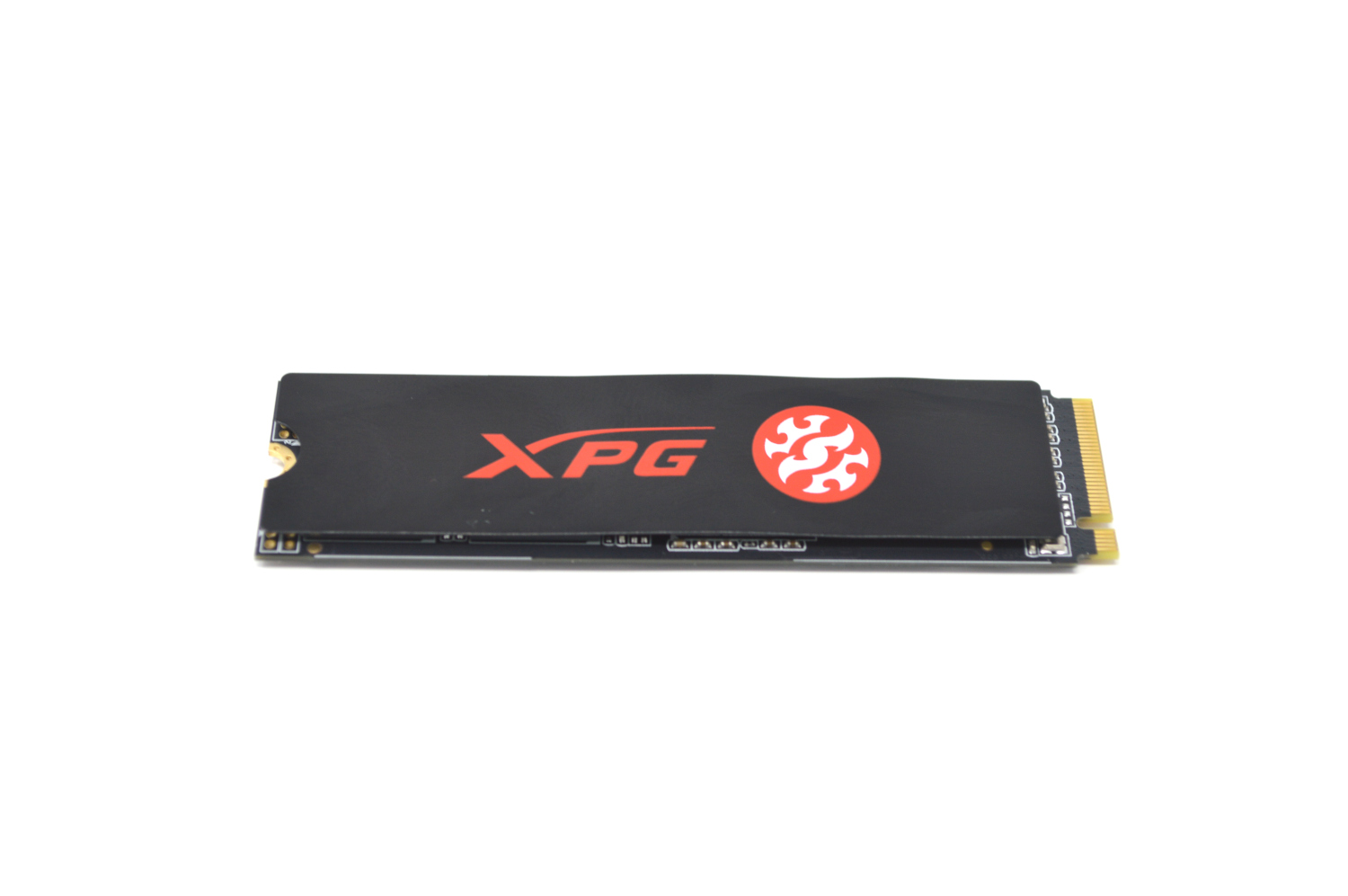 We’ll use the built-in memory benchmark tools of the AIDA64 to determine the memory’s performance.
We’ll use the built-in memory benchmark tools of the AIDA64 to determine the memory’s performance.
MaxxMEM2 is a lightweight tool that allows us to estimate the performance of the computer’s memory with minimum effort. We can use it to compare the performance of multiple computers or to test different configurations on our machine.
wPrime is a multi-threaded benchmarking application designed to measure the raw computational power of a CPU. It can be configured to run on a custom number of threads to accommodate multi-core CPUs.
CINEBENCH R11.5 is a real-world cross-platform test suite that evaluates the computer’s performance capabilities. CINEBENCH is based on MAXON’s award-winning animation software CINEMA 4D, which is used extensively by studios and production houses worldwide for 3D content creation.
RESULTS: Right off the bat, the ADATA XPG V2 2400MHz DIMMs shows that it could keep the pressure to the higher end module we got. In AIDA64’s Memory Benchmark, the 2400MHz kit from ADATA managed to beat the Two other kits, only losing in the latency department. MaxxMEM2 also shows better scores compared to the Two, albeit loosing again in the latency performance.
In AIDA64’s Memory Benchmark, the 2400MHz kit from ADATA managed to beat the Two other kits, only losing in the latency department. MaxxMEM2 also shows better scores compared to the Two, albeit loosing again in the latency performance.
wPrime is a CPU and memory intensive benchmark, where the DIMM’s timings matters the most, and speed comes next close. At the 1024M calculations, we could see that the ADATA managed to trail behind the AVEXIR kit by seconds, but is virtually identical in performance when it comes to 32M calculations.
PERFORMANCE (GAMING/3D):
Resident Evil 6, is a survival horror video game developed and published by CAPCOM. It’s one of my favorite PC games, mainly because I’m a fan of the series. It also has a built-in benchmarking tool to measure your PC’s performance.
Tomb Raider (2013) is the fifth game, and the reboot of the Tomb Raider series. It is developed by Crystal Dynamics, and published by Square-Enix. We disabled Tress FX for this benchmark.
RESULTS: Gaming wise, the ADATA XPG V2 2400MHz, along with our GTX 750 Ti, looks like a great combination. At Tomb Raider 2013 for example, our frame rate never dropped below 30 FPS, while on Resident Evil 6, the scores are well within the range of a fluid, and perfect game play experience.
PERFORMANCE (REALWORLD):
HandBrake is a a free, open-source, and multi platform tool for converting video from nearly any format to a selection of modern, widely supported codecs. We used a Full HD, 1080P MKV movie, and encoded it into a 1080P MP4 video.
x264 HD Benchmark is a tool that measures a PC’s encoding performance using a 1080P video clip then converts it to an x264 video format. It is memory and CPU intensive so it’s a great way to measure a PC’s performance.
RESULTS: Since we have yet to compare the ADATA XPG V2’s encoding performance, we’ll let you guys be the judge this time, but we’ll update these results once we got a hold of our test system’s DIMMs.
PERFORMANCE (OVERCLOCKING):
eXtreme Performance Gear sounds like something made for overclocking, so we tried to overclock the ADATA XPG V2 2400MHz to see if we could push it further. We ended up with a maximum of 2600MHz frequency (1300MHz effective), with timings 11-14-14-36 set on our Z87X-OC provided by GIGABYTE. Overall, it is not bad. We never needed to adjust the voltages to achieve that feat, and it’s very stable.
RESULTS: Even with loose timings, the overclocked ADATA XPG V2 2400MHz @ 2600MHz showed that it still is a capable kit. We saw an increase in copy, write, and latency performance interchangeably throughout the benchmarks, but the read performance on the other-hand, proved to be erratic.
VALUE & CONCLUSION:
The ADATA XPG V2 DDR3 2400MHz 2x4GB Kit is a sharp looking, and a good performing kit that could play catch up with other higher frequency and capacity kits found in the market, and it did not stop right there, as it features great read, write, and copy performance across the board. Latency is lagging behind by a bit though, but since the speed compensated for the latency, it still is good. With a 2400MHz frequency, AMD APU owners might be delighted with its performance as well.
Latency is lagging behind by a bit though, but since the speed compensated for the latency, it still is good. With a 2400MHz frequency, AMD APU owners might be delighted with its performance as well.
Build quality wise, the ADATA XPG V2 is a solid piece of PCB sandwiched between two slabs of metal. It looks indestructible, and should withstand a fall or two, though we do not advice anyone here to drop their precious memory kits anytime soon just for the sake of it. Available in Two colors, system builders wont find it hard to match the said kit to their custom built PCs; Be it for their clients, or for their own. We just hope that ADATA will add more color options in the near future.
With the changing landscape of the memory module arena, it is hard to sell tailored DIMM kits right now. Price is erratic as usual, and most users will probably buy what is cheapest. Now with that said, don’t get the ADATA XPG V2 DDR3 2400MHz 2x4GB kit wrong. It currently sells for around $95, or roughly 4, 200 Pesos which is already pretty good for its performance. With 2 colors available, pleasing aesthetics, good XMP performance, this is a memory kit that you should write on your checklist.
With 2 colors available, pleasing aesthetics, good XMP performance, this is a memory kit that you should write on your checklist.
ADATA XPG V2 DDR3 2400MHz
- PERFORMANCE — 8/10
- BUILD QUALITY — 8/10
- FEATURES — 7/10
- AESTHETICS — 7/10
- VALUE — 8/10
7.6/10
Summary
The ADATA XPG V2 DDR3 2400MHz 2x4GB Memory Kit now available at Newegg.com with a retail price at around $95. It is backed with ADATA’s Lifetime Warranty.
2×8 GB at DDR3-2400 C11-13-13 1.65 V
by Ian Cutresson November 11, 2013 1:00 PM EST
- Posted in
- Memory
- Intel
- ASRock
- ADATA
- DDR3
23 Comments
|
23 Comments
Overview, Specifications and Visual InspectionMarket Positioning, Test Bed, Performance IndexIGP GamingSingle dGPU GamingTri-GPU CrossFireX GamingCPU Real WorldCPU ComputeIGP ComputeOverclockingADATA XPG V2 2x8GB DDR3-2400 C11 Conclusions
Memory has an odd part to play in the desktop ecosystem. There is plenty of it from many different manufacturers at various prices, speeds and benefits. Most of the differentiation comes around the product, such that two sets of 8GB DDR3-1600 might differ in warranty and aesthetics alone. With that in mind, we have several memory kits in the office tested, and the first one under analysis is a 2×8 GB DDR3-2400 C11 kit from ADATA’s XPG V2 line.
There is plenty of it from many different manufacturers at various prices, speeds and benefits. Most of the differentiation comes around the product, such that two sets of 8GB DDR3-1600 might differ in warranty and aesthetics alone. With that in mind, we have several memory kits in the office tested, and the first one under analysis is a 2×8 GB DDR3-2400 C11 kit from ADATA’s XPG V2 line.
ADATA’s XPG (Extreme Performance Gear) V2 line is designed to showcase ADATA’s highest memory speed modules, although the range starts at 1600 C9 and extends to 3100 C12, with all speeds in 2×4 GB kits and 2×8 GB up to DDR3-2800. Each memory kit can be found in gold, as the kit today is, or in a tungsten grey. ADATA sent us several XPG V2 memory kits, such as this 2400 kit and a pair of 2800 kits to review.
The 2×8 2400 C11 kit sits in that spot around the sweet spot for memory tests: it escapes the basic failures that slow kits have, yet the specification precludes the price from spiraling out of control in terms of the memory MHz race that many manufacturers are keen to be a part of. While it is debatable if memory requires heatsinks, the gold colored ones on our XPG V2 aesthetically fit well with our ASRock Z87 OC Formula test bed and any similarly colored motherboard.
While it is debatable if memory requires heatsinks, the gold colored ones on our XPG V2 aesthetically fit well with our ASRock Z87 OC Formula test bed and any similarly colored motherboard.
Overclocking performance at a boosted 1.72 volts gave a nice jump to 2666 11-13-13 stable, and a performance index of ~240 was applicable up to 2666 MHz from an original kit PI of 218. Out of the kits we have in to test, this was actually one of the better results by comparison.
The AX3U2400W8G11-DGV 2×8 GB kit currently retails at $200, or $12.50/GB. There are obviously cheaper kits available if you just need a 2x8GB kit without concern for the memory speed, but unfortunately for ADATA there are kits available at almost one third less, including their own tungsten grey versions at $140, which offers all the benefits just in a different color. As memory has a tendency to go up and down in pricing, it is often best to check on the day.
Specifications
Memory Specifications
| ADATA | ADATA | Corsair | Patriot | ADATA |
G. Skill Skill |
|
| Name | — | AX3U2400W8G11-DGV | — | — | — | F3-3000C12D-8GTXDG |
| Speed | 1600 | 2400 | 2400 | 2400 | 2800 | 3000 |
| ST | 9-11-9-27 | 11-13-13-35 | 10-12-12-31 | 10-12-12-31 | 12-14-14-36 | 12-14-14-35 |
| Price | — | $200 | — | $92 | $316 | $520 |
| XMP | — | Yes | Yes | Yes | Yes | Yes |
| Size | 2 x 8GB | 2 x 8GB | 2 x 8GB | 2 x 4GB | 2 x 8GB | 2 x 4GB |
|
Performance Index |
178 | 218 | 240 | 240 | 233 | 250 |
|
|
||||||
| MHz | 1600 | 2400 | 2400 | 2400 | 2800 | 3000 |
| Voltage |
1. 35 V 35 V |
1.65 V | 1.65 V | 1.65 V | 1.65 V | 1.65 V |
| tCL | 9 | 11 | 10 | 10 | 12 | 12 |
| tRD | 11 | 13 | 12 | 12 | 14 | 14 |
| tRP | 9 | 13 | 12 | 12 | 14 | 14 |
| tRAS | 27 | 35 | 31 | 31 | 36 | 31 |
| tRC | 46 | 49 | ||||
| tWR | 20 | 16 | ||||
| tRRD | 315 | 391 | ||||
| tRFC | 6 | 7 | ||||
| tWTR | 10 | 12 | ||||
| tRTP | 10 | 12 | ||||
| tFAW | 33 | 29 | ||||
| CR | 2 | 2 | ||||
As this is our first proper memory review on Haswell, we have tested some other kits which are going to be the focus of future reviews, and thus as comparison points we have listed them here to give a scale of comparison.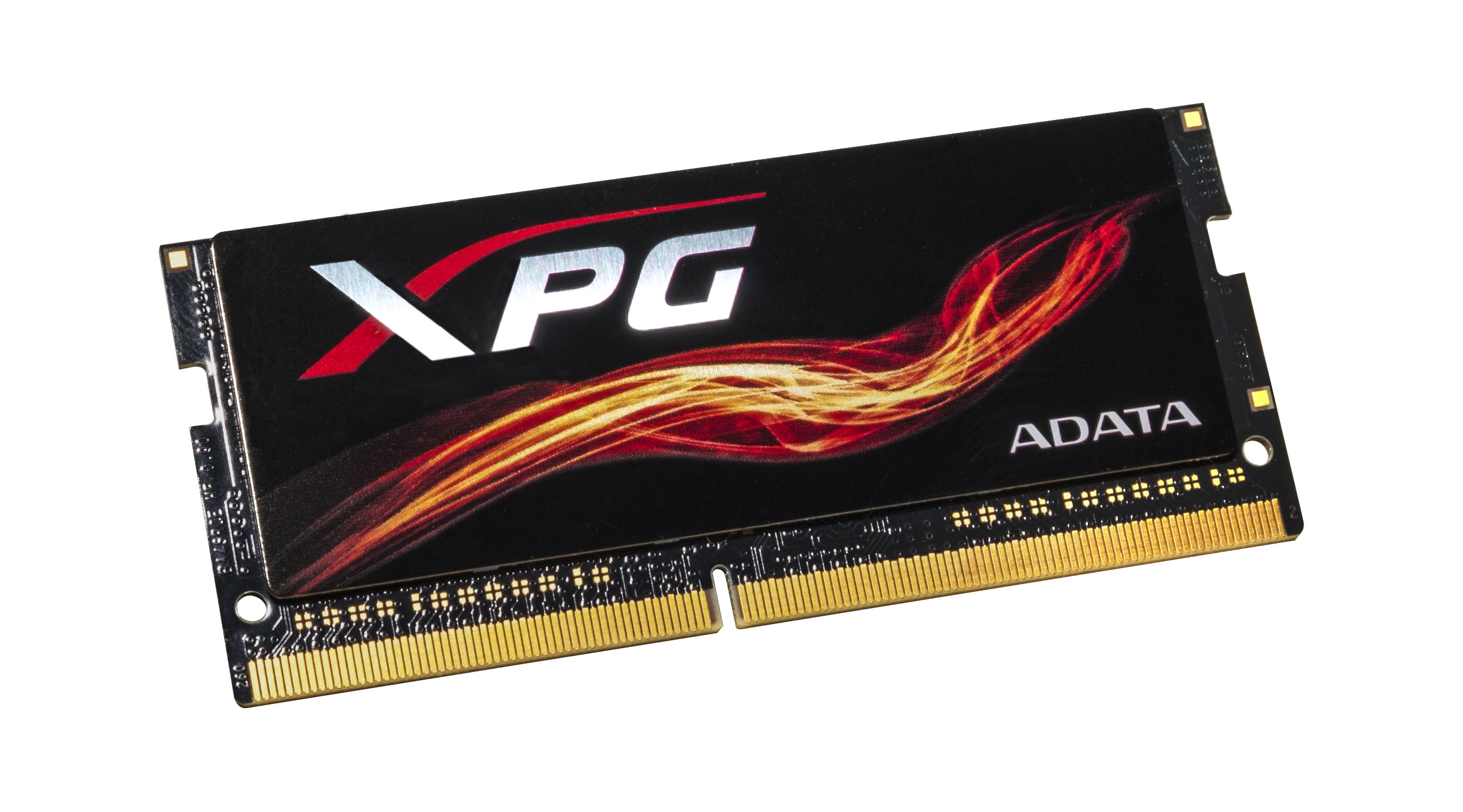 Compared to the G.Skill DDR3-3000 12-14-14 kit that was the focus of the Haswell memory overview, the ADATA kit we are testing today seems to have looser tWR and tFAW timings.
Compared to the G.Skill DDR3-3000 12-14-14 kit that was the focus of the Haswell memory overview, the ADATA kit we are testing today seems to have looser tWR and tFAW timings.
Visual Inspection
Thankfully ADATA have avoided using annoying plastic packaging that can be a pain to get into – there is a simple tab on the back to help open their XPG V2 line of memory. The packaging is simple enough, just a thin molded plastic to hold the memory in place:
The modules themselves have additional z-height, measured at 13.8mm for a total height of 44mm (1.73 inches).
Gallery: ADATA XPG V2: 2x8GB DDR3-2400 C11
Market Positioning, Test Bed, Performance Index
Overview, Specifications and Visual InspectionMarket Positioning, Test Bed, Performance IndexIGP GamingSingle dGPU GamingTri-GPU CrossFireX GamingCPU Real WorldCPU ComputeIGP ComputeOverclockingADATA XPG V2 2x8GB DDR3-2400 C11 Conclusions
PRINT THIS ARTICLE
ADATA XPG V2 AX3U2400W4G11-DMV 8GB Dual Channel DDR3-2400 Memory Kit GECID.
 com.
com.
::> RAM
>2013
> ADATA XPG V2 8GB Dual Channel DDR3-2400 Memory Kit AX3U2400W4G11-DMV
09/23/2013
ADATA Technology is a serious player in the RAM market. Moreover, the manufacturer makes the main bet on high-performance kits, which are characterized by high reliability and high overclocking potential. All of them have the prefix «XPG» (Xtreme Performance Gear) in their name and are divided into series depending on the intended purpose. One of these lines is ADATA XPG V2, which was announced just a few months ago, but has already managed to find its fans. And this is not surprising, because in the model range of the ADATA XPG V2 series there are memory sets with a speed of up to 3100 MHz. Manufacturers that produce such fast memory modules can be counted on the fingers of one hand, and ADATA Technology is now one of them. Agree, this says a lot.
There are nine sets of memory in the ADATA XPG V2 line. All of them consist of two modules with a total capacity of 8 or 16 GB. The frequency of their work starts from 1600 MHz and ends with the value mentioned above 3100 MHz. The model DDR3-2400 ADATA XPG V2 AX3U2400W4G11-DMV with a total capacity of 8 GB came to our testing.
All of them consist of two modules with a total capacity of 8 or 16 GB. The frequency of their work starts from 1600 MHz and ends with the value mentioned above 3100 MHz. The model DDR3-2400 ADATA XPG V2 AX3U2400W4G11-DMV with a total capacity of 8 GB came to our testing.
Packing and appearance of modules
ADATA XPG V2 DDR3-2400 memory AX3U2400W4G11-DMV comes in a plastic blister. It provides reliable fixation of the modules, as well as protection from shock and possible damage. Dense plastic, in turn, protects the memory modules from the breakdown of static electricity.
Inside the blister there is a cardboard backing with an ADATA Technology emblem, which is a stylized hummingbird, and brief information about the modules: operating speed — 2400 MHz, total capacity — 8 GB.
There are also icons of two proprietary technologies that are used in the DDR3-2400 ADATA XPG V2 AX3U2400W4G11-DMV memory kit: ensuring more stable and reliable operation at high frequencies;

As expected, the memory kit comes with a lifetime warranty from the manufacturer.
On the back of the cardboard tab, you can find a QR code with which the user can quickly register their product on the company’s official website, and also get access to download the 60-day version of the popular Norton Internet Security antivirus.
Separately, we note the presence of the “RoHS” emblem, which means that substances potentially hazardous to human health, such as cadmium and lead, were not used in the production.
DDR3-2400 ADATA XPG V2 AX3U2400W4G11-DMV modules look quite impressive externally. Note that the same cooling system is used for all memory from the ADATA XPG V2 series, regardless of the operating speed. In our case, the radiator is made in gray, although there is also a golden coloring in the assortment.
Each radiator is made of aluminum and consists of two halves connected by special latches. This allows you to provide good pressure to the memory chips, thereby improving heat dissipation. A high «comb» and a number of slots will also contribute to more efficient cooling of the chips.
This allows you to provide good pressure to the memory chips, thereby improving heat dissipation. A high «comb» and a number of slots will also contribute to more efficient cooling of the chips.
Looking ahead, we can say that this cooling system copes with its task very well. During testing in the nominal mode (at a frequency of 2400 MHz), the temperature at the base of the radiator and at the top of the «crest» did not exceed 43.7°C and 42.7°C, respectively. As you can see, there is a very small difference between these indicators, which only confirms the high rate of heat transfer and uniform heating of the radiators.
However, due to this configuration of heat distributors, the height of each module has also increased, which reaches 43 mm. This fact should be taken into account when choosing a system configuration. For example, some CPU coolers may not be compatible with this large memory.
On the back of the heatsink, the manufacturer placed a sticker with technical specifications, from which you can recognize the marking — AX3U2400W4G11-DMV, effective operating frequency — 2400 MHz, recommended set of timings (delays) — CL11-13-13-35, supply voltage — 1.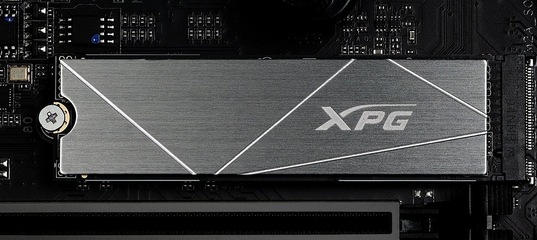 65 V, the volume of one module is 4 GB, the number of memory chips used is 8. You will also be reminded of the loss of warranty when this sticker is removed.
65 V, the volume of one module is 4 GB, the number of memory chips used is 8. You will also be reminded of the loss of warranty when this sticker is removed.
Specifications and standard operating modes
And now let’s take a closer look at the technical characteristics of the DDR3-2400 ADATA XPG V2 AX3U2400W4G11-DMV kit. To do this, we will use the programs CPU-Z and AIDA64.
Judging by the information received, five standard JEDEC operating modes are recorded in the SPD of ADATA XPG V2 AX3U2400W4G11-DMV DDR3-2400 memory modules: DDR3-685 9-9-9-25 1.5V DDR3- 6098-8-8-22 1.5V, DDR3-533 7-7-7-20 1.5V, DDR3-457 6-6-6-17 1.5V, DDR3-380 5-5-5-14 1 .5V and one XMP profile: DDR3-1200 (2400 MHz) 11-13-13-35 1.65V.
As expected, for a memory kit of this level, the SPD contains an XMP profile that allows you to use the effective settings declared in the technical specification. This should make life easier for the average user, allowing him to avoid wasting time when searching the BIOS for the necessary memory parameters that are responsible for frequency and delays (timings).
Before testing ADATA XPG V2 AX3U2400W4G11-DMV DDR3-2400 memory kit, let’s take another look at its specifications. For clarity, the data are summarized in the table:
|
Manufacturer and model |
ADATA XPG V2 DDR3-2400 |
|
Module marking |
AX3U2400W4G11-DMV |
|
Memory type |
DDR3 |
|
Guaranteed effective mode of operation (actual frequency, MHz) |
DDR3-2400 (1200) |
|
Form factor |
240 pin U-DIMM |
|
Number of modules in the set |
2 |
|
Memory capacity of each module, GB |
4 |
|
Recommended operating modes |
DDR3-1200 11-13-13-35 1.65V |
|
JEDEC Standard Operating Modes |
DDR3-685 9-9-9-25 1. DDR3-609 8-8-8-22 1.5V DDR3-533 7-7-7-20 1.5V DDR3-457 6-6-6-17 1.5V DDR3-380 5-5-5-14 1.5V |
|
Extended XMP profiles |
DDR3-1200 10-12-12-31 1.65V |
|
Expanded profiles EPP |
No |
|
Technologies used |
2oz COPPER PCB Thermal Conductive Technology |
|
Height of each module, mm |
43 |
|
Manufacturer website |
ADATA |
Testing
For testing, we used the following stand configuration:
|
Processor |
Intel Core i7-3770K (3.5GHz, 8MB L3, LGA1155) |
|
Motherboards |
ASUS P8Z77-V PRO/THUNDERBOLT |
|
Cooler |
Thermalright SI-128 (LGA775) + VIZO Starlet UVLED120 (62. |
|
Video card |
ZOTAC GeForce GTX 480 AMP! (NVIDIA GeForce GTX 480, 1.5 GB GDDR5, PCIe 2.0) |
|
Hard disk |
Hitachi Deskstar HDS721616PLA380 (160 GB, 16 MB, SATA-300) |
|
Optical drive |
ASUS DRW-1814BLT SATA |
|
Power supply |
Seasonic M12II-500 (SS-500GM), 120mm fan |
The other overclocker’s memory set — DDR3-2400 DDR3-2400 G.Skill TridentX F3-2400C10D-16GTX with a capacity of 16 GB (2×8 GB) was the opponent in testing. Both kits were tested in the following operating modes:
|
Model |
Operating speed, MHz |
Delay set |
||||||||||||||||||||||||||||||||||||||||||||||||||||||||||||||||||||||||||||||||||||||||||||||||||||||||||||||||||||||||||||||||||||||||||||||||||||||||||||||||
|
ADATA XPG V2 AX3U2400W4G11-DMV |
2400 |
11-13-13-35 |
||||||||||||||||||||||||||||||||||||||||||||||||||||||||||||||||||||||||||||||||||||||||||||||||||||||||||||||||||||||||||||||||||||||||||||||||||||||||||||||||
|
2133 |
10-12-12-32 |
|||||||||||||||||||||||||||||||||||||||||||||||||||||||||||||||||||||||||||||||||||||||||||||||||||||||||||||||||||||||||||||||||||||||||||||||||||||||||||||||||
|
1400 |
9-11-11-29 |
|||||||||||||||||||||||||||||||||||||||||||||||||||||||||||||||||||||||||||||||||||||||||||||||||||||||||||||||||||||||||||||||||||||||||||||||||||||||||||||||||
|
G. |
2400 |
10-12-12-31 |
||||||||||||||||||||||||||||||||||||||||||||||||||||||||||||||||||||||||||||||||||||||||||||||||||||||||||||||||||||||||||||||||||||||||||||||||||||||||||||||||
|
2133 |
9-11-10-28 |
|||||||||||||||||||||||||||||||||||||||||||||||||||||||||||||||||||||||||||||||||||||||||||||||||||||||||||||||||||||||||||||||||||||||||||||||||||||||||||||||||
|
1866 |
9-9-9-24 |
|||||||||||||||||||||||||||||||||||||||||||||||||||||||||||||||||||||||||||||||||||||||||||||||||||||||||||||||||||||||||||||||||||||||||||||||||||||||||||||||||
Thus, the XPG Gammix S70 Blade is more suitable for desktop systems with motherboards equipped with M.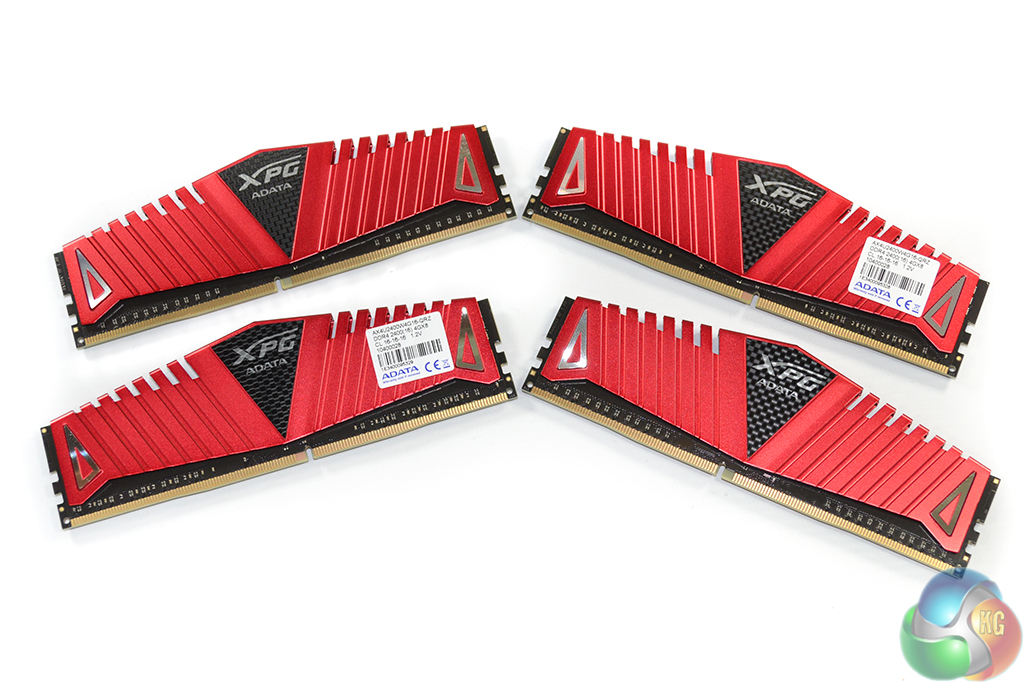 2 slots equipped with their own heatsinks, as well as for laptops and, which is emphasized by the manufacturer, for the PlayStation 5. At the same time, the difference in The cost of XPG Gammix S70 Blade and XPG Gammix S70 is also quite noticeable. Buying a «thin» version of the drive can save about $15.
2 slots equipped with their own heatsinks, as well as for laptops and, which is emphasized by the manufacturer, for the PlayStation 5. At the same time, the difference in The cost of XPG Gammix S70 Blade and XPG Gammix S70 is also quite noticeable. Buying a «thin» version of the drive can save about $15.
While the XPG Gammix S70 Blade isn’t the first Innogrit IG5236 controller-based drive we’ve come across, its PCB looks unfamiliar. In terms of layout, it is somewhat different from the PCBs of sister SSDs that we have tested so far. Basically, the changes are minor and affect the location and nomenclature of the elements of the power circuit, but one detail still catches the eye. The IG5236 controller chip received a black substrate, while previously such controllers were assembled on a green textolite. Moreover, the black material in the new controller is a kind of compound, by means of which the surface of the entire integrated circuit is aligned in height with the crystal in order to protect it from chipped corners and improve heat transfer.
If you take a closer look at the controller chip, you can also notice changes in the marking, which can be interpreted as signs of a version change. At least, instead of the previously used IG5236FAA marking, the chip installed on the XPG Gammix S70 Blade reads the IG5236СAA line. And obviously it belongs to a later version, since the production date of this controller is August 2021.
It is difficult to say what exactly is remarkable about the new modification. In different batches of the XPG Gammix S70 Blade, there were variants with both new “black” and old “green” controllers, but this has nothing to do with the types of flash memory installed. Since its introduction, the XPG Gammix S70 Blade has always been equipped with Micron’s 176-layer TLC 3D NAND. Older 96-layer memory could only be found in the XPG Gammix S70 in the non-Blade version. Thus, buying a «thin» Blade version of the flagship ADATA drive, you can be 100% sure that you will get the most productive version of the Innogrit IG5236 platform.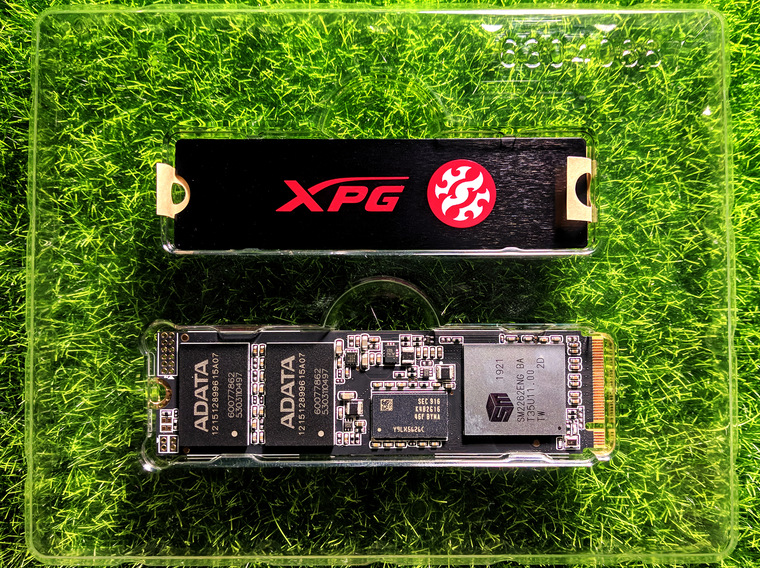
Why you should strive to buy an SSD with 176-layer Micron TLC 3D NAND has been said more than once. This is the fastest memory by modern standards. It uses a 1600 MHz interface and also offers 35% lower read and write latencies when compared to the old 96-layer memory.
However, the gradual transition of SSD manufacturers to the use of fast Micron memory is not at all connected with concern for users. Due to the increased number of layers, data in such memory is stored 60% denser (with a concentration of approximately 10.3 Gbit per square millimeter semiconductor chip), which means it provides a lower cost per gigabit. In other words, its implementation is based solely on economic reasons.
But something else is important for us. Crystals 176-layer Micron TLC 3D NAND have exactly the same capacity as the earlier flash memory — 512 Gb. And this means that the memory array of the updated drives with the IG5236 controller has not lost in the degree of parallelism and, by all indications, should be faster than the memory array assembled on 96-layer crystals.
In the terabyte version of the ADATA XPG Gammix S70 Blade, which we received for testing, the flash memory is distributed over four microcircuits packaged by ADATA itself. Each of the chips contains four crystals inside. Therefore, the eight-channel controller in this case has the ability to work with a double interleaving of devices in the channels.
Together with four TLC 3D NAND chips, the drive board carries two DDR4-2666 SDRAM chips manufactured by Samsung with a capacity of 512 MB each. They are needed to buffer the address translation table and speed up the SSD with small-block operations. Thus, no claims can be made to the XPG Gammix S70 Blade architecture — it has PCIe 4.0 support, an eight-channel fast TLC 3D NAND array, a capacious DRAM buffer and a modern controller from a well-established developer.
⇡#Specifications
ADATA claims that all XPG Gammix S70 Blade and XPG Gammix S70 drives currently in production come with 176-layer memory and have identical performance. However, they differ not only in the cooling system. The Blade version has a wider model range — it has a 512 GB drive, which is not in the XPG Gammix S70 variant.
However, they differ not only in the cooling system. The Blade version has a wider model range — it has a 512 GB drive, which is not in the XPG Gammix S70 variant.
| Manufacturer | ADATA | ||
| Series | XPG Gammix S70 Blade | ||
| Model number | AGAMMIXS70-512G-CS | AGAMMIXS70B-1T-CS | AGAMMIXS70B-2T-CS |
| Form factor | M.2 2280 | ||
| Interface | PCI Express 4.0 x4 — NVMe 1.4 | ||
| Capacity GB | 512 | 1024 | 2048 |
| Configuration | |||
| Flash memory: type, manufacturing process, manufacturer | Micron 176-layer 512Gb TLC 3D NAND | ||
| Controller | Innogrit IG5236 | ||
| Buffer: type, capacity | DDR4, 512MB |
DDR4, 1024MB |
DDR4, 2048MB |
| Capacity | |||
Max.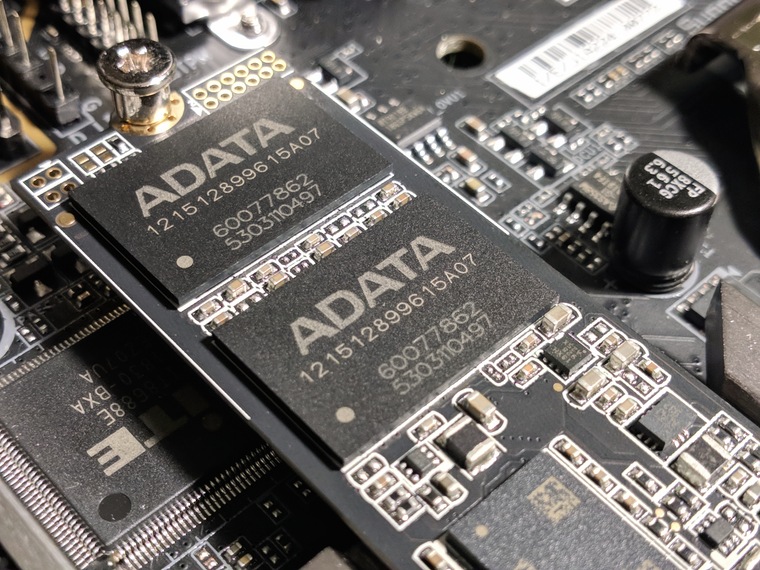 sustained sequential read speed, MB/s sustained sequential read speed, MB/s |
7200 | 7400 | 7400 |
| Max. sustained sequential write speed, MB/s | 2600 | 5500 | 6800 |
| Max. random read speed (4 KB blocks), IOPS | 425 000 | 740 000 | 750 000 |
| Max. random write speed (blocks of 4 KB), IOPS | 510 000 | 740 000 | 750 000 |
| Physical | |||
| Max. power consumption, W | N/A | ||
| MTBF (mean time between failures), mln h | 2 | ||
| Recording resource, TB | 370 | 740 | 1480 |
| Warranty period, years | 5 | ||
| Dimensions: L × H × D, mm | 80 x 22 x 3.3 | ||
| Weight, g | 7 | ||
The performance figures are also noteworthy: they really have become noticeably higher than those of drives based on the same Innogrit IG5236 controller, but with Micron memory of the previous generation. The terabyte modification received a particularly strong increase — it boasts higher speeds for both reading and writing, and the peak random read speed has more than doubled.
The terabyte modification received a particularly strong increase — it boasts higher speeds for both reading and writing, and the peak random read speed has more than doubled.
However, these changes are more clearly seen in the example: below are two screenshots of CrystalDiskMark, a synthetic test that we use to check the validity of the specifications specified by manufacturers. The first one shows the performance of the Patriot Viper VP4300 with the old memory version, and the second one shows the ADATA XPG Gammix S70 Blade with the new generation Micron memory.
| Was: Patriot Viper VP4300 1TB | Became: ADATA XPG Gammix S70 Blade 1 TB |
It is easy to see that the improvement affects almost the entire array of indicators. But most clearly, the Innogrit IG5236 platform really wins from the new memory in terms of small-block reading speed, and even with mixed operations.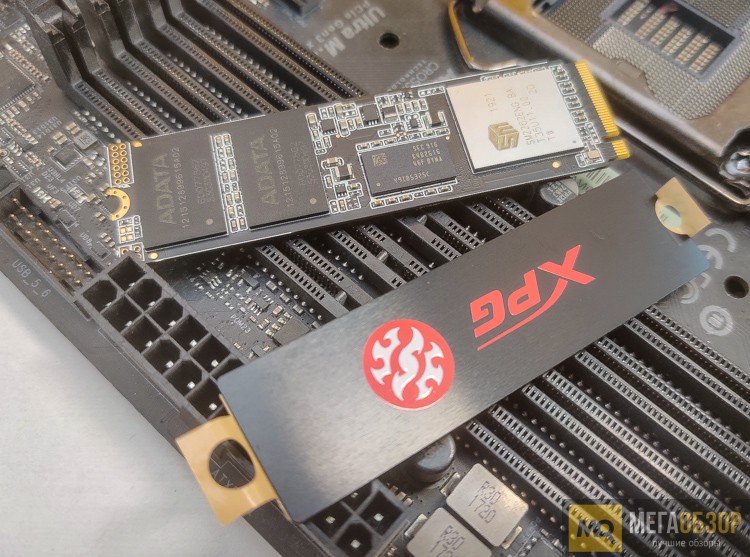 Moreover, the increase is so great that already at this stage we can confidently say that the ADATA XPG Gammix S70 Blade has nothing in common with previous drives on the same controller — this is a fundamentally different flagship-level solution with noticeably higher performance.
Moreover, the increase is so great that already at this stage we can confidently say that the ADATA XPG Gammix S70 Blade has nothing in common with previous drives on the same controller — this is a fundamentally different flagship-level solution with noticeably higher performance.
However, along with a significant improvement in the speed characteristics of the ADATA XPG Gammix S70 Blade, it cannot boast of an increase in resource. Changing the flash memory did not affect the terms of the warranty. Its term is still the same 5 years, and during this time the drive is allowed to be overwritten 740 times.
ADATA’s pricing policy deserves special mention. This manufacturer traditionally sets aggressive prices for its SSDs, and the XPG Gammix S70 Blade is no exception. Although this drive claims to be an alternative to Samsung 980 PRO and WD Black SN850, it costs less, and the price difference can reach quite significant 10-15%.
⇡#Software
ADATA offers SSD Toolbox for its own drives, which is also suitable for XPG Gammix S70 Blade. It offers a standard set of features, including drive and flash memory diagnostics, TRIM command management, and automatic configuration of operating system settings (disabling Superfetch, Prefetch, and defragmentation). Also through the SSD Toolbox, you can update the firmware and perform the Secure Erase procedure.
It offers a standard set of features, including drive and flash memory diagnostics, TRIM command management, and automatic configuration of operating system settings (disabling Superfetch, Prefetch, and defragmentation). Also through the SSD Toolbox, you can update the firmware and perform the Secure Erase procedure.
To be honest, ADATA’s SSD Toolbox doesn’t do much compared to what the market leaders offer. But on the other hand, owners of the XPG Gammix S70 Blade can get their hands on the Acronis True Image backup utility — all you need to do is register on the ADATA website.
⇡#Description of the test system and testing methodology
ADATA XPG Gammix S70 Blade is a worthy contender for a place on a par with the flagship PCIe 4.0 SSD, so we will compare it with the most productive consumer models that are available for sale. The main rivals for him, obviously, will be the Samsung 980 PRO and WD Black SN850. However, we should not forget about the Phison E18 platform, which has recently also been strengthened by Micron’s progressive memory, thanks to which it can be considered as another flagship option.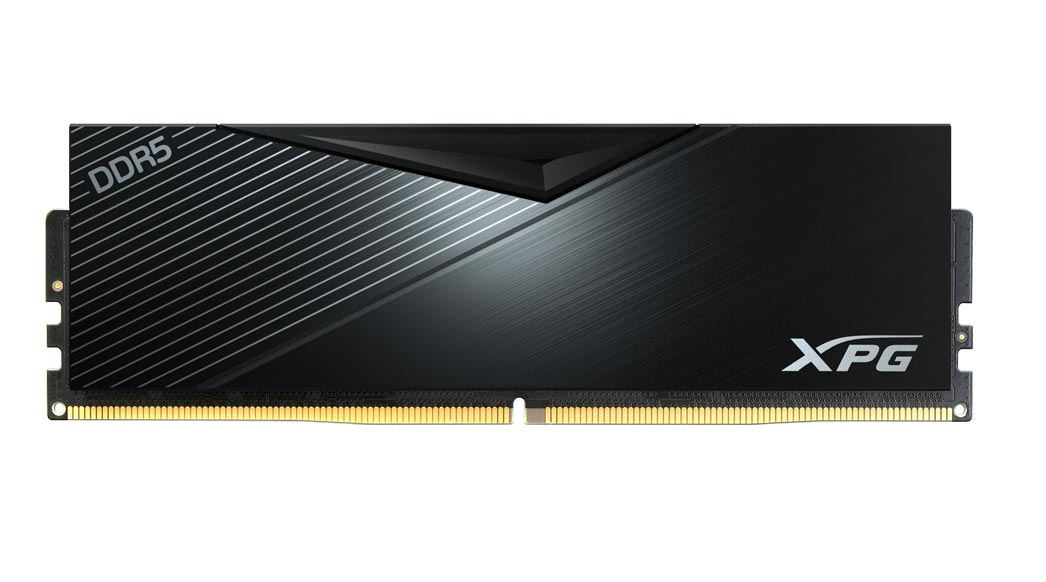 We took the Seagate FireCuda 530 as an example of such a drive.
We took the Seagate FireCuda 530 as an example of such a drive.
Also included in the test were the Patriot Viper VP4300, as the initial version of the Innogrit IG5236 platform; MSI Spatium M480, as the initial version of the Phison E18 platform; and also Crucial P5 Plus, as a unique original drive, built on a vertically integrated Micron platform.
Thus, seven models took part in testing, information about which is given in the table.
| Drive | Article | Capacity, GB | Interface | Controller | DRAM- Buffer | Flash Memory | Firmware |
|---|---|---|---|---|---|---|---|
| ADATA XPG Gammix S70 Blade | AGAMMIXS70B-1T-CS | 1024 | PCIe 4.0 x4 | Innogrit IG5236 | Yes | TLC 3D NAND, Micron | 3.2.F.3C |
| Crucial P5 Plus | CT1000P5PSSD8 | 1000 | PCIe 4. 0 x4 0 x4 |
Micron DM02A1 | Yes | TLC 3D NAND, Micron | P7CR402 |
| MSI Spatium M480 | S78-440L430-P83 | 1000 | PCIe 4.0 x4 | Phison PS5018-E18 | Yes | TLC 3D NAND, Micron | EIFM21.2 |
| Patriot Viper VP4300 | VP4300-1TBM28H | 1024 | PCIe 4.0 x4 | Innogrit IG5236 | Yes | TLC 3D NAND, Micron | V1.2A |
| Samsung 980 PRO | MZ-V8P1T0BW | 1000 | PCIe 4.0 x4 | Samsung Elpis | Yes | TLC 3D NAND, Samsung | 4B2QGXA7 |
| Seagate FireCuda 530 | ZP1000GM3A023 | 1000 | PCIe 4.0 x4 | Phison PS5018-E18 | Yes | TLC 3D NAND, Micron | SU6SM001 |
| WD Black SN850 | WDS100T1X0E | 1000 | PCIe 4.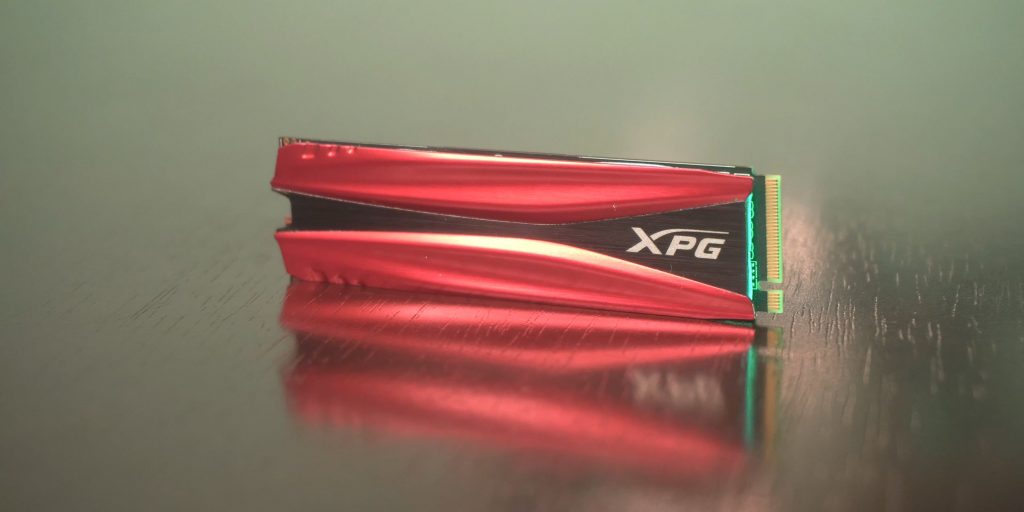 0 x4 0 x4 |
SanDisk | Yes | TLC 3D NAND, SanDisk | 613200WD |
The test system configuration was as follows:
- GHz, 25 MB L3).
- CPU cooler: Noctua NH-D15.
- Motherboard: ASUS ROG Strix Z690-F Gaming WiFi (LGA1700, Intel Z690).
- Memory: 2 × 16 GB DDR5-4800 SDRAM, 38-38-38-70 (Kingston Fury Beast KF548C38BBK2-32).
Testing was performed on Microsoft Windows 11 Pro (21h3) Build 22000.282.0 operating system with KB5008353 update installed, which fixes SSD performance during random write operations. The system used the Microsoft Standard NVMe Express Controller 10.0.18362.1 driver.
The test drives were installed in the M.2 slot, to which the PCI Express lines are connected directly from the processor.
⇡#SLC caching: writing, reading and deleting files
SLC caching is the most important algorithm that is responsible for speeding up write operations in modern drives.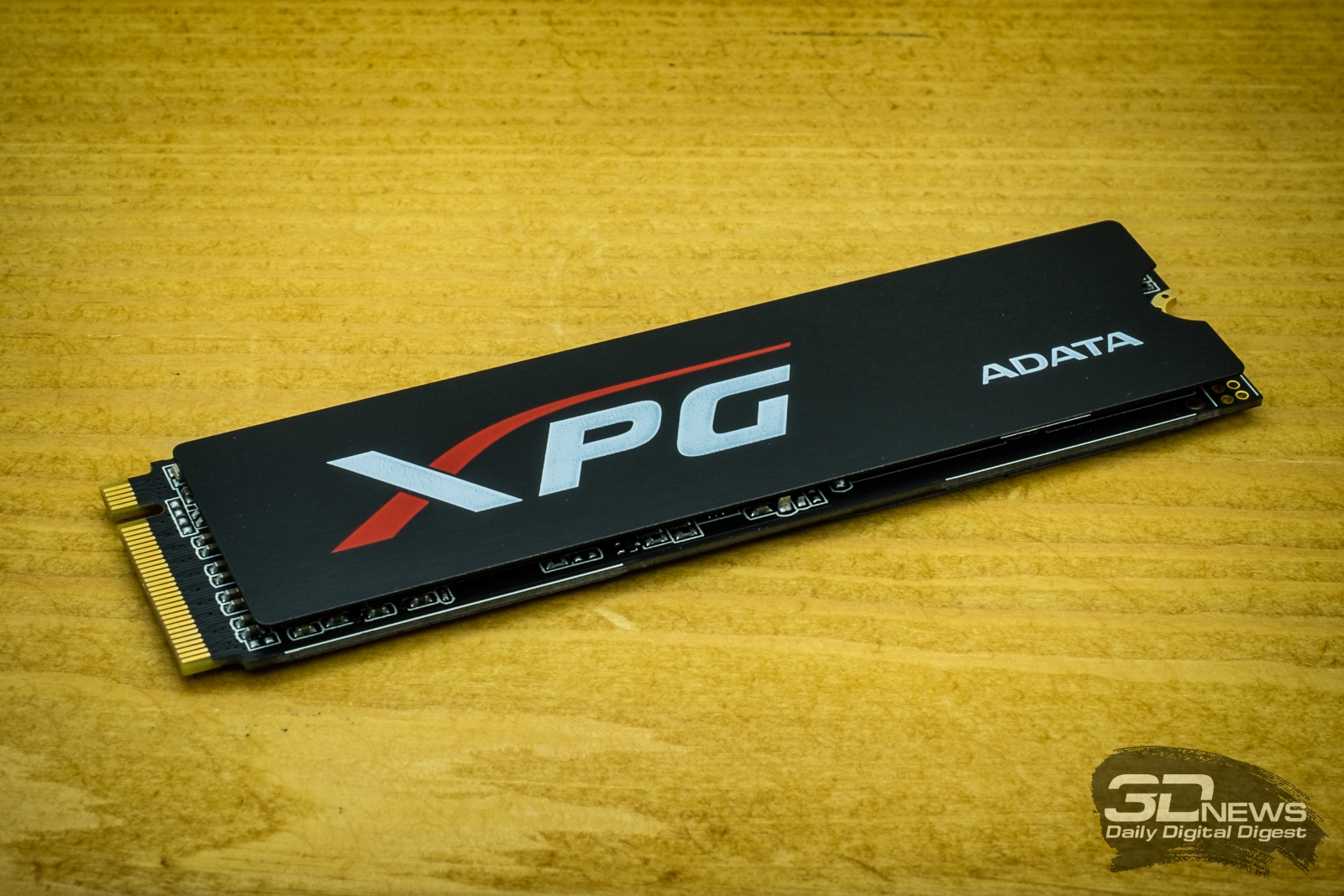 Its essence lies in the fact that information on an SSD with TLC- or QLC-memory is first written in a fast one-bit mode, and its compaction occurs later, when the drive is idle. This means that modern drives can demonstrate high speeds only on limited amounts of data, the size of which depends on the specific implementation of the SLC caching algorithm.
Its essence lies in the fact that information on an SSD with TLC- or QLC-memory is first written in a fast one-bit mode, and its compaction occurs later, when the drive is idle. This means that modern drives can demonstrate high speeds only on limited amounts of data, the size of which depends on the specific implementation of the SLC caching algorithm.
To find out how it works in practice and what are the speeds of a flash memory array of specific drives when operating in various modes, we conduct a test to continuously write files to an SSD until its capacity is completely exhausted while simultaneously measuring performance. This test uses standard Windows single-threaded file copy operations to the SSD being tested (from a RAM disk), and the test is carried out in three passes: for a completely blank SSD; for an SSD half full of data; and for the SSD, which is initially three-quarters full.
The Innogrit IG5236 controller supports dynamic SLC caching — we are well aware of this from tests of earlier SSDs based on it. Two things have changed. First, ADATA XPG Gammix S70 Blade has learned to record files in TLC mode at a higher speed. Secondly, on a partially filled drive, the situation with performance stability has noticeably worsened — due to some internal processes, the write speed can vary quite a lot.
Two things have changed. First, ADATA XPG Gammix S70 Blade has learned to record files in TLC mode at a higher speed. Secondly, on a partially filled drive, the situation with performance stability has noticeably worsened — due to some internal processes, the write speed can vary quite a lot.
If we talk about absolute indicators, then the situation looks like this. The average file write speed in SLC mode, which is achieved at the very beginning of the copying process, for the XPG Gammix S70 Blade 1 TB is 3.5 GB / s. Drives on the IG5236 controller with 9Micron 6-layer memory. But when the free space in the cache runs out and TLC mode is turned on, the write speed of the XPG Gammix S70 Blade can reach 1.4 GB / s, which is about 0.2 GB / s faster than related drives with memory of the previous generation. And at the last stage of the process, when simultaneously with the recording, the controller is busy transferring cells from SLC to TLC mode, the speed of IG5236 drives with different memory is equalized again.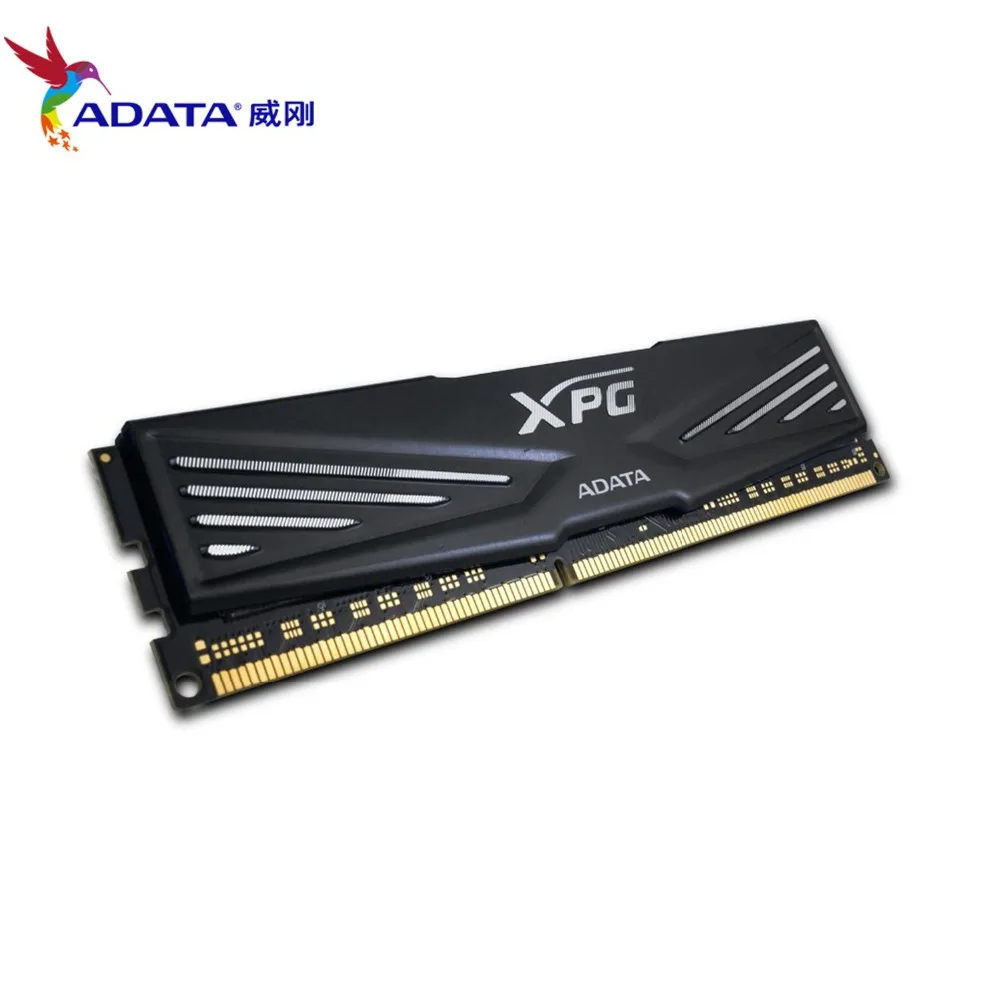 In other words, on average, in terms of write speed XPG Gammix S70 Blade from previous drives on the same controller did not go so far.
In other words, on average, in terms of write speed XPG Gammix S70 Blade from previous drives on the same controller did not go so far.
However, in the chart comparing the minimum copy speed to SSD, the XPG Gammix S70 Blade looks noticeably better than the Patriot Viper VP4300, although they are comparable in maximum copy speed.
As for the speed, which is obtained by measuring the time required to completely fill the entire SSD with files, the XPG Gammix S70 Blade outperforms the Patriot Viper VP4300 by 25% in this characteristic. However, this does not allow him to get into the major league of flagship drives. If you have to spend 15 minutes filling a terabyte XPG Gammix S70 Blade with files, then score Samsung 980 PRO of the same capacity can be done in just eight and a half minutes.
But when measuring the speed of copying files from the tested XPG Gammix S70 Blade drives, it looks better. It lags a little behind the Samsung 980 PRO and WD Black SN850, but all other flagship-level SSDs are inferior to it.
The implementation of memory cleaning in the IG5236 platform can be called a reference. Even when we got acquainted with drives based on it with old memory, it was almost impossible to notice any slowdown after file erasing operations. The XPG Gammix S70 Blade is just as good in this regard — background execution of the TRIM command almost does not lead to a decrease in performance and an increase in the latency of normal operations. This can be seen from the results of a practical experiment in which we monitor the performance of random reads following the deletion of files with a total size of 64 GB. How it changes is shown in the following graph.
Here you can see only short-term latency spikes, which are unlikely to be somehow felt in practical interaction with an SSD. In any case, this is much better than a complete denial of service for incoming requests for several seconds, which occurs, for example, in the WD Black SN850, or a temporary slowdown that many other flagship drives suffer from.
⇡#Performance of complex file operations
In the descriptive part of this review, we said that the XPG Gammix S70 Blade could well be another flagship drive. But the first tests do not confirm this at all. A particularly sad situation develops in the case of asymmetric file operations inside the drive. When zipping or unzipping large folders, our protagonist slides to the bottom of the charts, which is in stark contrast to the results of the Patriot Viper VP4300 based on the same controller. Whether it’s a new version of the base chip, or some changes at the firmware level, but the XPG Gammix S70 Blade copes very badly with mixed loads, when it needs to simultaneously perform heterogeneous multidirectional operations.
⇡#Performance in applications
But when testing the ADATA XPG Gammix S70 Blade in workloads, everything is exactly the opposite. When working with resource-intensive applications that are sensitive to the speed of the disk subsystem, it outperforms all other options in performance. To be honest, it seems that Innogrit engineers know some special secret of optimizing firmware for workloads — not only solutions based on the new version of the advanced IG5236 platform, but also drives with a bufferless design based on the budget IG5220 controller can boast of high performance in such scenarios.
To be honest, it seems that Innogrit engineers know some special secret of optimizing firmware for workloads — not only solutions based on the new version of the advanced IG5236 platform, but also drives with a bufferless design based on the budget IG5220 controller can boast of high performance in such scenarios.
The ADATA drive manages to lead in SPECworkstation not only in terms of the integral result, but also in all scenarios included in it, simulating work with applications of one kind or another. In other words, the XPG Gammix S70 Blade is a great option for computers used in professional activities.
SPECworkstation 3.1
⇡#Gaming performance
Everything is good with ADATA XPG Gammix S70 Blade and gaming performance. Let in this case he is not an unattainable leader, but at least he is among them. Only the WD Black SN850 and Segate FireCuda 530 were able to score higher in the 3DMark Storage profile test, but the gap is insignificant.
True, there are nuances that appear in individual test scenarios. If you look at the speed of running games with an SSD, then the XPG Gammix S70 Blade cannot be called an outstanding solution. But its strengths are manifested in gaming scenarios, where the SSD is required not only to read, but also to write data — capturing video, saving progress, installing and copying games from external media.
If you look at the speed of running games with an SSD, then the XPG Gammix S70 Blade cannot be called an outstanding solution. But its strengths are manifested in gaming scenarios, where the SSD is required not only to read, but also to write data — capturing video, saving progress, installing and copying games from external media.
3DMark Storage
⇡#Synthetic tests: linear operations
In the linear operation speed tests, the XPG Gammix S70 Blade occupies a middle position on the charts among other top-tier drives. For example, it loses to the Seagate FireCuda 530 — an SSD based on the Phison E18 platform, but outperforms the Crucial P5 Plus. Since all three of these drives are based on the same 176-layer memory, we can conclude that the work with serial data in the Innogrit IG5236 controller is organized at least not in the best way. Nevertheless, special claims against him cannot be made either.
⇡#Synthetic tests: small-block operations
XPG Gammix S70 Blade does not get into the leader group when measuring the speed of random operations. In such synthetic tests, it surpasses only the SSD on the previous version of the Innogrit IG5236 platform — the Patriot Viper VP4300. And by the way, in these measurements, the XPG Gammix S70 Blade is again quite significantly behind the Seagate FireCuda 530 on the new version of the Phison E18 platform. This is a clear illustration of the fact that the results of synthetic tests do not always correlate with performance under real loads.
In such synthetic tests, it surpasses only the SSD on the previous version of the Innogrit IG5236 platform — the Patriot Viper VP4300. And by the way, in these measurements, the XPG Gammix S70 Blade is again quite significantly behind the Seagate FireCuda 530 on the new version of the Phison E18 platform. This is a clear illustration of the fact that the results of synthetic tests do not always correlate with performance under real loads.
⇡#Temperature conditions
Modern flagship-level drives cannot be used without additional cooling — their temperatures go beyond any reasonable limits. And according to this criterion, ADATA XPG Gammix S70 Blade is a real flagship. Just look at his thermal image under load.
Indeed, without a heat sink, the controller on this drive can heat up to 100 degrees, despite the fact that the Innogrit IG5236 is manufactured using a relatively modern 12-nm process technology. It reaches this temperature in 3 minutes of linear mixed load with a predominance of read operations — this is what we use when checking the thermal regime.
If the aluminum heat spreader supplied with the drive is glued onto the drive, the situation changes slightly for the better. The temperature on the radiator is fixed at 85 degrees.
Unfortunately, we will not be able to refer to the readings of our own monitoring of the drive — it gives implausible and obviously artificially low readings. They are shown in the graph below, but you need to keep in mind that the temperature of 74 degrees telemetry S.M.A.R.T. issues when the external temperature of the controller reaches 100 degrees.
Nevertheless, despite its incorrectness, the graph allows us to draw two conclusions. Firstly, even with the missing heatsink, the Innogrit IG5236 controller does not have any thermal protection, which is more bad than good, if we take into account its real 100-degree temperature. Secondly, the heat-dissipating plate, which is given by the manufacturer in addition to the SSD, does not look like an efficient cooling system. Its installation reduces the temperature of the controller (according to S. M.A.R.T.) by only a couple of degrees.
M.A.R.T.) by only a couple of degrees.
⇡#Conclusions
ADATA XPG Gammix S70 Blade testing reaffirmed that moving to Micron’s 176-layer TLC 3D NAND improves the performance of any SSD platform. Previously, we were convinced of this using the Phison E18 as an example, and now we have seen how significantly the performance increases for those SSDs that are based on the Innogrit IG5236 controller. As a result, today’s drives based on this chip really provide much better performance than the same solutions that were available on the market earlier.
The ADATA XPG Gammix S70 Blade is an excellent example of a new wave of SSD based on the Innogrit IG5236 platform — in it this chip is adjacent to the «correct» Micron flash memory. As a result, this drive comes much closer to the flagships than its predecessors with the same controller managed. Moreover, in some scenarios, the XPG Gammix S70 Blade is even the fastest SSD on the market.
However, the resulting product still does not look like an absolute champion.

 5V
5V 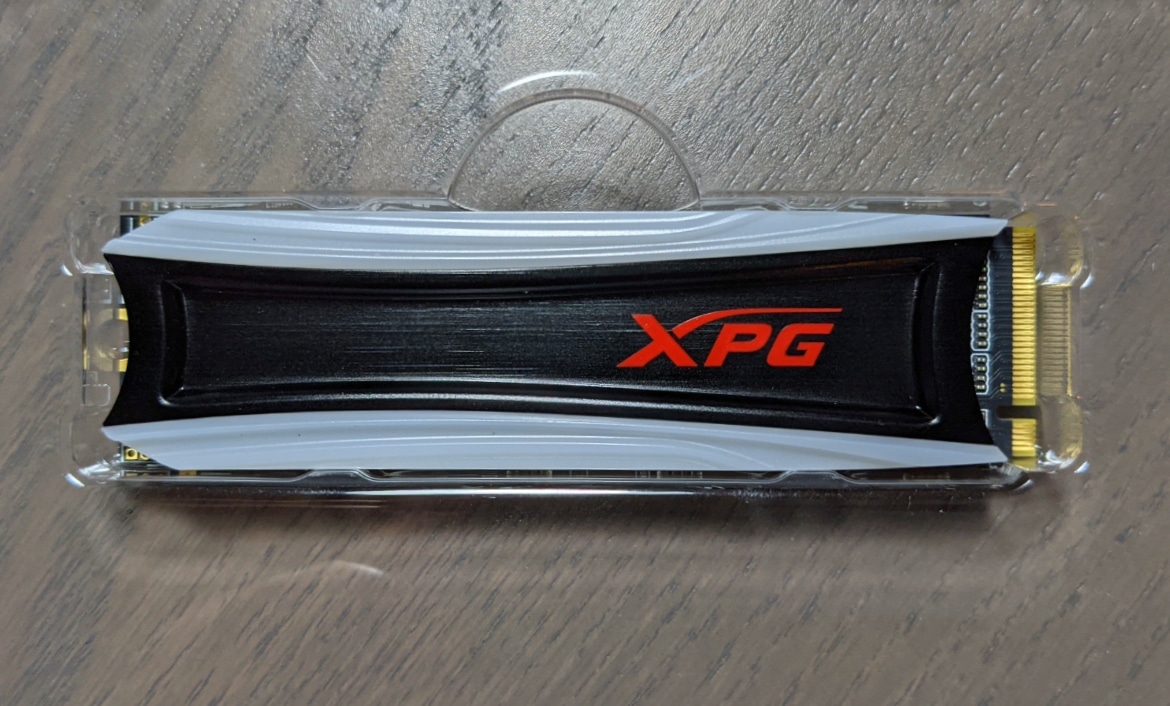 7 CFM, 31.1 dB)
7 CFM, 31.1 dB)  Skill TridentX F3-2400C10D-16GTX
Skill TridentX F3-2400C10D-16GTX 

 As testing has shown, a set of DDR3-2400 ADATA XPG V2 AX3U2400W4G11-DMV modules can compete on equal terms with other high-speed memory kits from equally well-known manufacturers.
As testing has shown, a set of DDR3-2400 ADATA XPG V2 AX3U2400W4G11-DMV modules can compete on equal terms with other high-speed memory kits from equally well-known manufacturers.  And it proved to be very unexpected: under real user loads, its performance turned out to be at least as good as that of the Samsung 970 EVO Plus. For an SSD based on a four-channel controller without a DRAM interface, this can be called a phenomenal achievement — until now, any drives of similar architecture could not boast of such a level of performance. It looks like the Innogrit developers behind the Patriot P400 have mastered some secret to efficient SSD designs. And so, after getting acquainted with the product based on the IG5220 chip, we decided to take a closer look at what other options for drives based on Innogrit chips exist, especially in the upper segment.
And it proved to be very unexpected: under real user loads, its performance turned out to be at least as good as that of the Samsung 970 EVO Plus. For an SSD based on a four-channel controller without a DRAM interface, this can be called a phenomenal achievement — until now, any drives of similar architecture could not boast of such a level of performance. It looks like the Innogrit developers behind the Patriot P400 have mastered some secret to efficient SSD designs. And so, after getting acquainted with the product based on the IG5220 chip, we decided to take a closer look at what other options for drives based on Innogrit chips exist, especially in the upper segment.  The fact is that Innogrit has quietly improved its platform, and those drives based on the IG5236 chip that are on sale now have more attractive characteristics than their predecessors.
The fact is that Innogrit has quietly improved its platform, and those drives based on the IG5236 chip that are on sale now have more attractive characteristics than their predecessors. 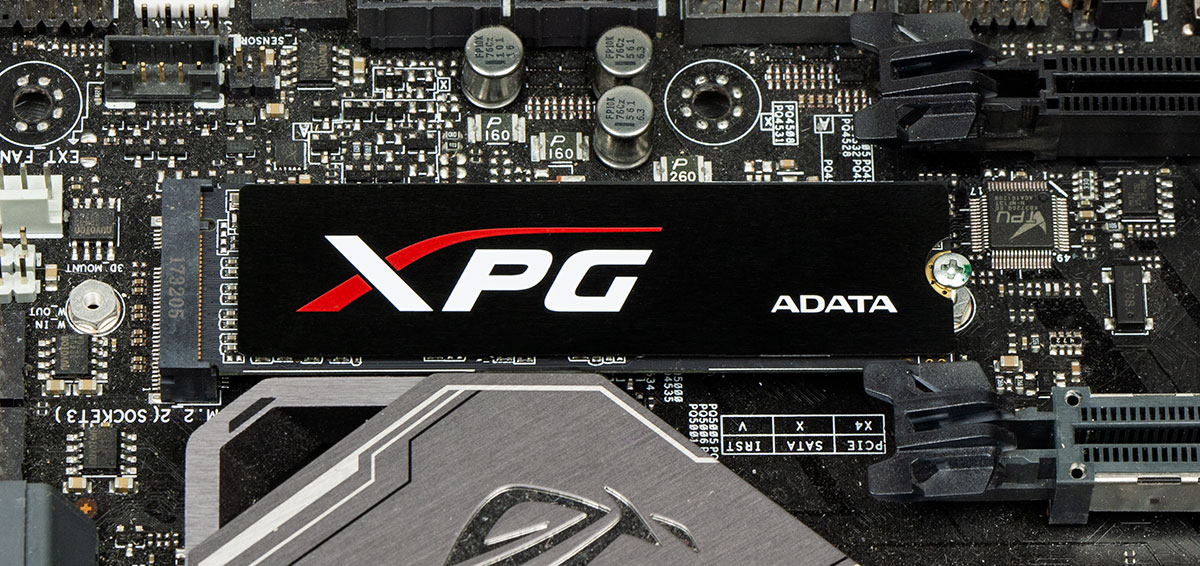
 But so that the review does not look like a repetition of what has already been studied, today we will talk not only about the new, but also about a slightly different modification of it — ADATA XPG Gammix S70 Blade. A feature of this version is a more compact cooling system, which allows using this drive as an upgrade for the PlayStation 5.
But so that the review does not look like a repetition of what has already been studied, today we will talk not only about the new, but also about a slightly different modification of it — ADATA XPG Gammix S70 Blade. A feature of this version is a more compact cooling system, which allows using this drive as an upgrade for the PlayStation 5.